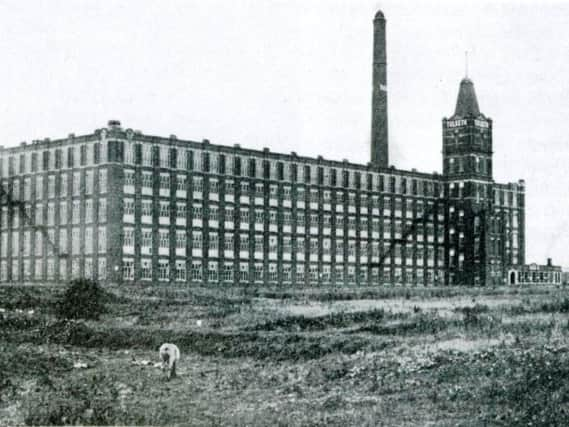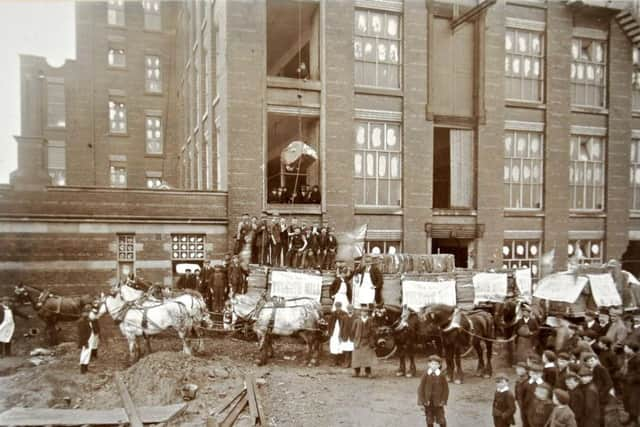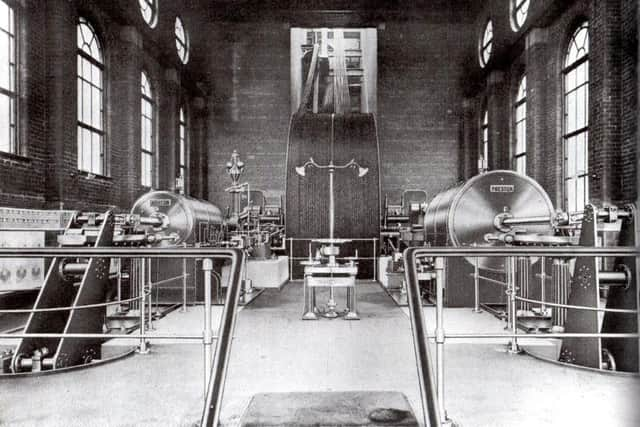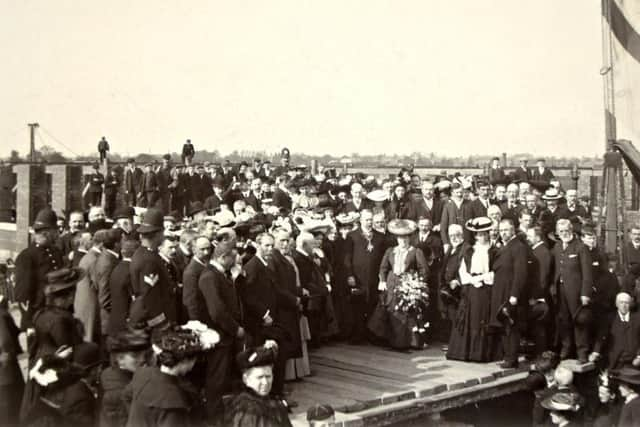Last days of famous Preston mill


It’s a building steeped in history, built in 1905 at the height of the cotton boom, Preston’s Tulketh Mill still remains one of Ashton’s most prominent landmarks.
This month marks 50 years since Tulketh Mill, in Blackpool Road, fell victim to the cotton industry’s demise and closed its doors as a working mill.
Advertisement
Hide AdAdvertisement
Hide AdAs the Mayoress of Preston, Mrs Mary Margerison, laid the first foundation stone on May 13, 1905, a new optimism was injected into the town as hundreds of new jobs were to be created.


The five-storey building in Ashton-on-Ribble was designed by Fred Dixon, from Oldham. Constructed out of almost 6m machine-made Accrington red bricks, with decorative bands of yellow brick intertwined, the mill was built to cover an impressive 104,000 square metres.
Rectangular and flat roofed from the exterior, inside the floors were supported from cast iron columns and steel beams with concrete flooring for fire protection. And then there was perhaps the most prominent structure of Dixon’s design – the red brick chimney which stood tall for miles to see; much taller than it does today.
Reflecting the cotton mill’s demise perhaps, the mill’s chimney was lowered in the 1930s due to cracks in the brick work, and again in the ’60s.
Advertisement
Hide AdAdvertisement
Hide AdDespite its scale, the development of Tulketh Mill coincided with the beginning of the end for Lancashire working mills. The outbreak of the First World War spelled disaster for textile mills across the North West.


Cotton could no longer be exported to foreign markets, which led those countries to set up their own factories.
There was no longer a demand for British cotton because those countries were now weaving their own at a fraction of the cost.
By the 1930s, 800 mills had closed across Britain and 345,000 workers had left the industry – Tulketh Mill survived longer than most, but eventually bowed to the inevitable.
Advertisement
Hide AdAdvertisement
Hide AdJanuary 8, 1968 saw the announcement of Tulketh Mill’s closure as a cotton mill, with the Lancashire Evening Post headlining their front page ‘Imports doom super mill.’


The article read: “The bitter news was given to employees today – when the firm’s leader said they could see no future for the industry under ANY government.”
Upon hearing their fate, the 500 mill workers responded by shouting “TULKETH” across the rooftops of Preston’s landscape. But the town was aware it could have been Horrockses or Croston Cotton feeling the wrath of unemployment, as this was an all too familiar tale of many Lancashire mills of that time – slumps, closures and redundancies.
After spending 40 years working at Tulketh Mill, Hector MacDonald was one of the 500 workers who lost their job that day.
Advertisement
Hide AdAdvertisement
Hide AdSpeaking to the Post 50 years ago, Hector said: “I started at the mill when I was 14. When my mother died I was adopted by my aunt. They were in textiles, so we went into the mill. We just followed them.


“It’s a hard job mine, and I’ll not go into textiles again. The money’s been good, mind.”
In his 40 years at the mill, Hector only had four days off. The fourth was the day he lost his job.
Like so many others, Hector worried how he would find another job telling the Post: “I think it’s going to be difficult. I’m adaptable, I feel I could do many a semi-skilled job. But my age is against me.
Advertisement
Hide AdAdvertisement
Hide Ad“A lot of people are taking it badly because they know the future holds practically nothing for them. You can see tears in the women’s eyes. They were really upset, it’s a big loss to them.”
Following its closure in January fears for the mill’s future ensued, with the Post reporting on a campaign to save the mill.
But later that year the uncertainty was eased and the derelict building was given new life when Peter Craig, part of the Littlewoods Mail Order Stores group, set up business there and recruited 2,000 new staff.


Although the mill was now no longer used in its original purpose, most of its original features remained.
Advertisement
Hide AdAdvertisement
Hide AdAdrienne Rice, from Newton-with-Scales, worked at Tulketh Mill as a query handler for Littlewoods, she recalls: “Parts of the building had been divided into offices, but much of it remained open plan with all the original pipework and structures still visible.”
While some windows had to be removed on the top floor to enable the removal of spinning machines, many of the windows below remained.
Thinking back to the working conditions of the mill, Adrienne said: “In summer it could get extremely hot in there because of all the windows. Many of us use to complain that it was too hot to work.
“Some people even asked what temperature does it have to reach for us to not have to work… but no one ever got away with that!”
Advertisement
Hide AdAdvertisement
Hide AdIn 2005 Littlewoods held a reunion to mark 100 years since the mill’s first stone was laid.
The owners searched for the mill’s ex-cotton workers and held a special dinner in their honour.
David Smith was one of those cotton workers, and speaking to the Post back in 2005 he described the working conditions of the cotton mill: “It was very, very hot in the room, but I really enjoyed working there.
“There were no goggles or earplugs like you have to have these days with health and safety, but it was extremely loud in there. In fact I had to learn to lip-read quickly, which I can still do today!
Advertisement
Hide AdAdvertisement
Hide Ad“It was easier back then. You would walk out of one job on the Monday and be in another on the Tuesday. But I kept getting drawn back to the mill.”
In fact David, who began working at the mill aged 15, found himself returning to the mill when Littlewoods took over to work as a security officer, he said: “I do like working here – there is a special atmosphere – and I know most of the nook and crannies of the building.”
After a run of more than 30 years, Littlewoods’ time at Tulketh Mill came to an end and in 2005 Carphone Warehouse applied for planning permission to take over the landmark.
On December 19, 2006 their request came to fruition with the official opening of the Carphone Warehouse call centre.
Advertisement
Hide AdAdvertisement
Hide AdInitial expectations suggested the call centre would take on a workforce of a few hundred, but by early in 2007 there were 2,000 people working there.
The grade 2 listed building was fully fitted out to create a new contact centre, including a restaurant, relaxation area, gym, central comms room, power data installations and replacement windows.
And the mill is still home to Carphone Warehouse today. Although a number of jobs were axed early last year, it still remains one of Preston’s biggest employers.